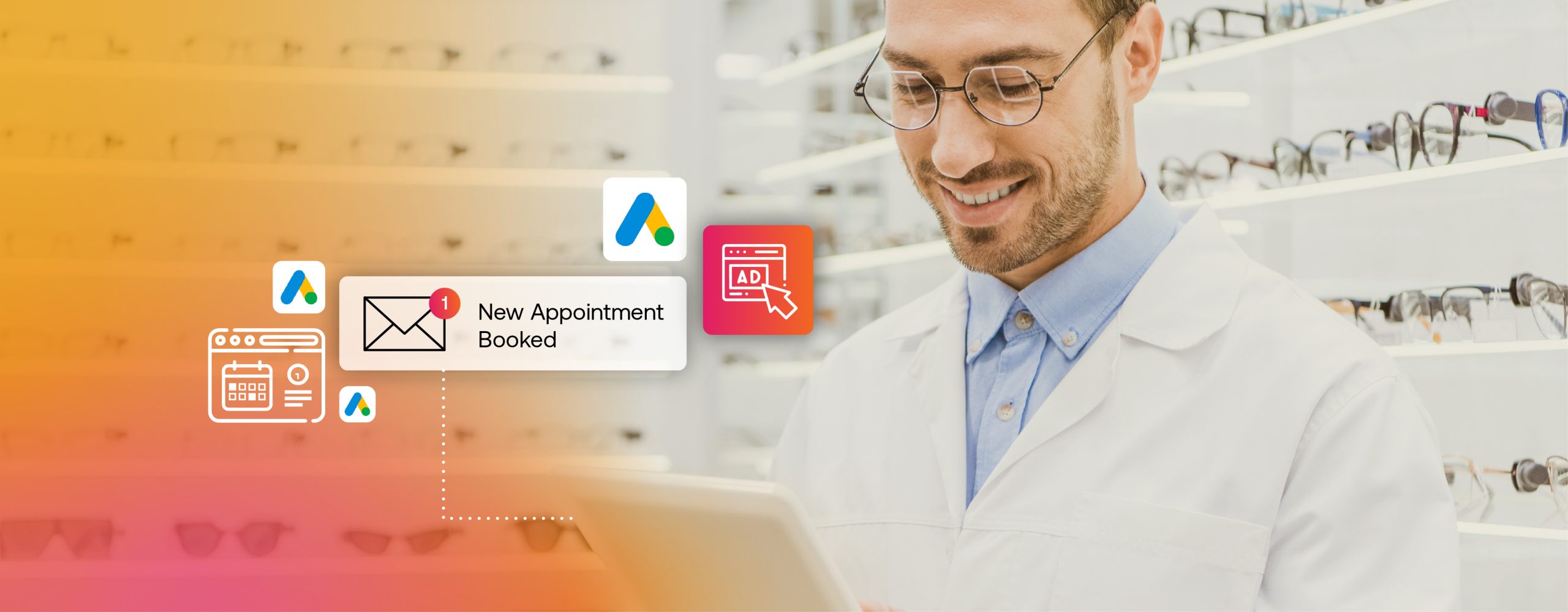All optical practices are uniquely complex. Each practice has different workflows, particular examination techniques, various frames and lenses, distinct ways of handling appointment calendars and largely very different expectations in terms of how and what is needed from a seemingly simple piece of software. Bringing clarity to the complexity of an optical practice is not an easy feat.
Central to any software for optometrists is the “user-friendliness” of said software. An eyecare practice management system can have all of the features in the world, but unless they are “user-friendly” they won’t be effective.
When I think of what truly makes a “user-friendly” piece of software, I think it boils down to two overarching principles;
– Designed for the eyecare industry but more importantly, with the eyecare industry.
– Designed using leading user interface design principles.
So, lets dig in.
Designed for the eyecare industry but more importantly, with the eyecare industry.
Throughout the design process and into the user testing experience it’s paramount you work hand in hand with all your end users; dispensing opticians, opticians, optometrists and optical assistants. It’s important that all angles are covered.
It’s key to have software engineers and project and product managers with an optical domain knowledge working full-time on the project. This is vital for the seemingly small however very detailed questions that come up hourly. In optical practices, details are key – it’s critical in interface design, that we maintain the same degrees of detail.
Having people on your team is not however enough, you also need a large base of practicing eyecare professionals to constantly provide a feedback loop. It’s important that design phases are not too long. For example, in Ocuco, we work in short development cycles which allow us to deliver updates more frequently and this reduces the feedback loop time.
It is critical that this group is diverse, extensive, and encouraged to provide frank, honest feedback. As I have already mentioned, optometric practice is not a one-size-fits-all profession. It’s therefore paramount when considering building an optical patient management system, that it is extremely flexible and empowers different practices to work as they do.
Finally, if it’s a truly comprehensive collaborative process, you also then need to ultimately test the final “feature” from a behavioural point of view. This is often done in a controlled environment and called usability testing. We will monitor a user’s behaviour as they go through the steps in the process. This is an essential part of the process. It’s human nature to know what we want but we are often unaware of what we actually need. Monitoring testing behaviour helps spot these habits that are intrinsic in day-to-day optical life.
Designed using leading user interface design principles.
All optical practices are uniquely complex. Each practice has different workflows, particular examination techniques, various frames and lenses, distinct ways of handling appointment calendars and largely very different expectations in terms of how and what is needed from a seemingly simple piece of software. Bringing clarity to the complexity of an optical practice is not an easy feat.
Central to any clinical software system is the “user-friendliness” of said software. An optical management software can have all of the features in the world, but unless they are “user-friendly” they won’t be effective.
When I think of what truly makes a “user-friendly” piece of optometrist practice management software, I think it boils down to two overarching principles;
– Designed for the eyecare industry but more importantly, with the eyecare industry.
– Designed using leading user interface design principles.
So, lets dig in.
Designed for the eyecare industry but more importantly, with the eyecare industry.
Throughout the design process and into the user testing experience it’s paramount you work hand in hand with all your end users; dispensing opticians, opticians, optometrists and optical assistants. It’s important that all angles are covered.
It’s key to have software engineers and project and product managers with an optical domain knowledge working full-time on the project. This is vital for the seemingly small however very detailed questions that come up hourly. In optical practices, details are key – it’s critical in interface design, that we maintain the same degrees of detail.
Having people on your team is not however enough, you also need a large base of practicing eyecare professionals to constantly provide a feedback loop. It’s important that design phases are not too long. For example, in Ocuco, we work in short development cycles which allow us to deliver updates more frequently and this reduces the feedback loop time.
It is critical that this group is diverse, extensive, and encouraged to provide frank, honest feedback. As I have already mentioned, optometric practice is not a one-size-fits-all profession. It’s therefore paramount when considering building a practice management software for optometrists that it is extremely flexible and empowers different practices to work as they do.
Finally, if it’s a truly comprehensive collaborative process, you also then need to ultimately test the final “feature” from a behavioural point of view. This is often done in a controlled environment and called usability testing. We will monitor a user’s behaviour as they go through the steps in the process. This is an essential part of the process. It’s human nature to know what we want but we are often unaware of what we actually need. Monitoring testing behaviour helps spot these habits that are intrinsic in day-to-day optical life.
Designed using leading user interface design principles.
Let’s stand back for a second and consider the vast amounts of information an optical practice management system must contain. If we left that all on one screen, I think we might give our users a heart attack.
Balancing huge amounts of data, with advanced features and many functions and ensuring these tasks are manageable in optometry software is no easy feat.
It is best to employ a design strategy called ‘Progressive Disclosure’. Progressive Disclosure is where you present essential information, only when it is necessary, easing the load for eyecare professionals as they go through their workflow. Users must only deal with what is applicable when it is applicable. This approach ensures users can navigate efficiently without feeling overwhelmed.
Designing patient scheduling software for opticians requires a delicate balance of technical expertise alongside end user testing and feedback. Once this balance is achieved, the end result is a system that empowers optical practices to deliver a best-in-class eyecare experience.




